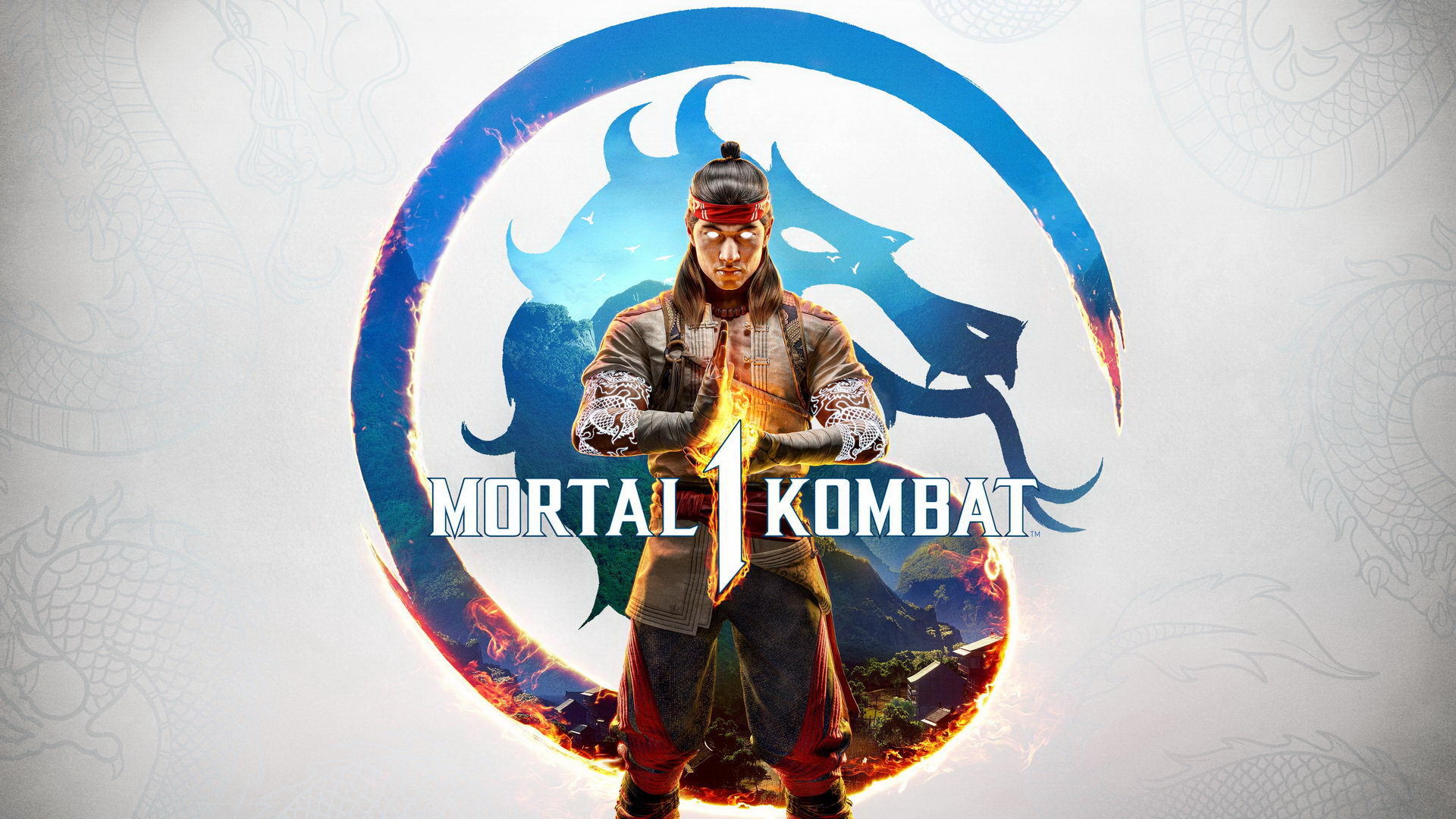Mortal Kombat 1
Developer: NetherRealm Studios
Publisher: Warner Bros.
Platforms: PC, Playstation 5, Xbox Series X (Reviewed), Switch
Release Date: Available Now
Price: $69.99 USD – Available Here $109.95 AUD – Available Here
Overview
When it was revealed that NetherRealm was taking Mortal Kombat yet again, many fans of the franchise grew a bit weary, especially since the series had undergone a soft reboot of sorts a little over a decade ago, but it turns out that not only has Liu Kang’s actions in Mortal Kombat 11 brought about a reboot to the world of Mortal Kombat, it also gave the developers a chance to start things with a fresh coat of paint with plenty of familiarity beneath the surface. Such is the case with Mortal Kombat 1, where familiarity and fresh new mechanics blend to offer a highly entertaining, gore filled fighting game that more than lives up to the franchise’s reputation.
Story
While nearly every fighting game offers some form of story content, Mortal Kombat really stepped it up back in 2011 when they reset the storyline the first time around and became something of a groundbreaker for how expansive and cinematic a fighting game storyline can be and Mortal Kombat 1 is no slouch in this regard. With fifteen chapters spread across four acts, each chapter will place players in control of a specific Mortal Kombat 1 fighter and follow the grand tale across hours worth of cutscenes interspersed with fights and the occasional “Test Your Might” moments.
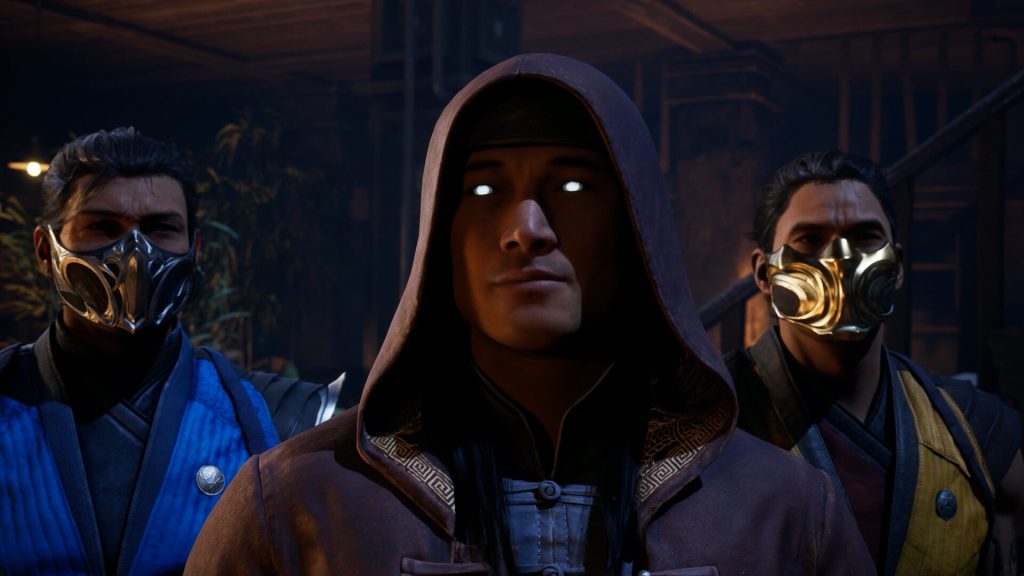
The storyline itself is an interesting one, as those familiar with the ending of Mortal Kombat 11 will find that it continues Liu Kang’s victory over Kronika with him becoming Fire God Liu Kang and ushering a “New Era” by recreating the universe as he saw fit using the power of her Hourglass. Despite things going quite well for some time, with Liu Kang being a benevolent enough creator to not only revive EarthRealm and Outworld but all the other realms as well, things slowly start to spiral beyond his control. What begins as an annual competition between Earthrealm’s chosen champion and Outworld’s warriors quickly begins to escalate, showcasing familiar faces with brand new roles, showcasing new story elements, character motivations, and much more as the story winds through countless twists and turns as more details are revealed.
Although it may feel like Mortal Kombat 1’s storyline ends a bit on the soonish side, especially given the biggest twists happening in the latter half of the story mode, it is an incredible ride in more ways than one. Not only does this “New Era” allow long established characters to be rebuilt and showcased with new story elements, including some rather surprising ones getting spotlighted and given more storyline and development than they may ever have had before in franchise history, but it is also presented incredibly well, with lengthy cutscenes that tie in perfectly with the fights that players will have with other characters throughout the story, with even the aforementioned “Test Your Might” moments being surprising little additions that will keep players involved in the mostly well-crafted storyline throughout its entire run.
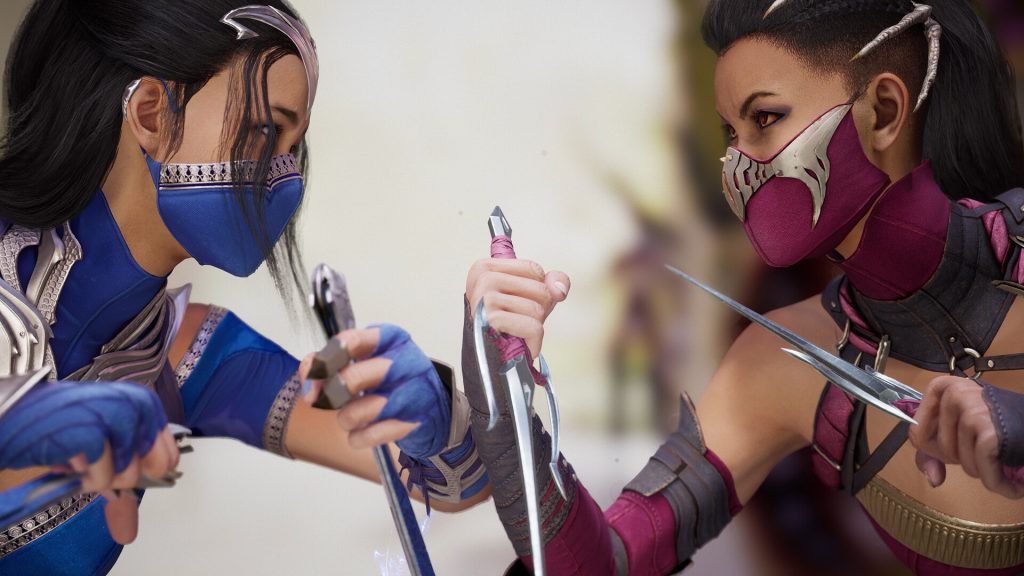
Outside of the Story mode players will still be able to obtain unique character endings by completing an arcade-style Towers match with characters of their choice, though it is worth noting that Kameo characters do not have any endings. The other story mode is an incredibly thin one in the form of the seasonal “Invasions.” After a tutorial that sees players interacting with Johnny Cage, they will enter the Invasion proper, with this first season involving a vengeance seeking Scorpion leading a massive army. The story throughout Invasion is presented with limited artwork and a bit of voice work through each stage but not much else, leaving the mode more for single player content than actual story, though I guess it is nice that there is at least some story included here for those that want it.
Gameplay
The best way to keep things feeling fresh for a fighting game is to add in a brand new mechanic and while many elements of Mortal Kombat 1 will feel just as familiar to longtime fans such as having a button for block and a fairly stiff feeling combat system overall compared to other fighters on the market, there are plenty of new options available. This time around we have the Kameo system as well as a number of ways that players can now manage their meter with only a single meter dictating enhanced special moves and combo breakers, the adjusted Fatal Blow now featuring a start-up making it easier to block unless players work it into a combo of sorts, and other mechanics, such as Krushing Blows have been removed entirely. It is also worth noting that, unlike a certain other fighting game franchise that came out this year, there is no “Modern” control scheme, meaning players will need to practice with their favorite fighter if they want to pull off their moves and combos well.
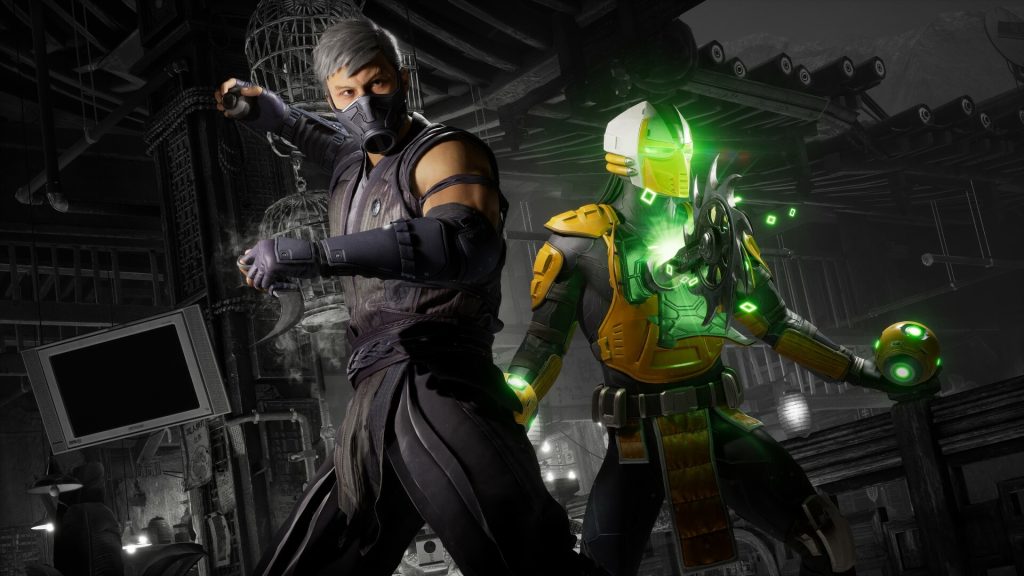
Thankfully the tutorials and practice options available in Mortal Kombat 1 are quite detailed, though some characters get more love than others. Players will be able to learn the proper way to make use of the game’s various fighting mechanics that have undergone changes and even freshen them up on others, including how certain match-ups play out. As mentioned before, some characters don’t get quite as many tutorials and practice options as others which is a strange choice, especially when the game’s impressively large roster of fighters, and collection of Kameo characters, make for a massive amount of combinations.
Now, back to the Kameo system and how it is a game changer of sorts for Mortal Kombat as a whole. Outside of a few story fights, players will always have a second character that will accompany them into battle, being able to be called upon for assistance during the fight. Any mode outside of the story allows players to select from a list of fifteen total currently available Kameo fighters, each with their own special abilities that can be activated by spending a separate meter that recharges quickly throughout the match. Each Kameo has three different specials that they can use as well as their own Fatality and Brutality that players can choose to use to finish a match if they feel like it. Kameo fighters also work as the “Combo Breaker” mentioned earlier, costing the player’s entire meter to use but helping them escape a possibly dangerous series of attacks.
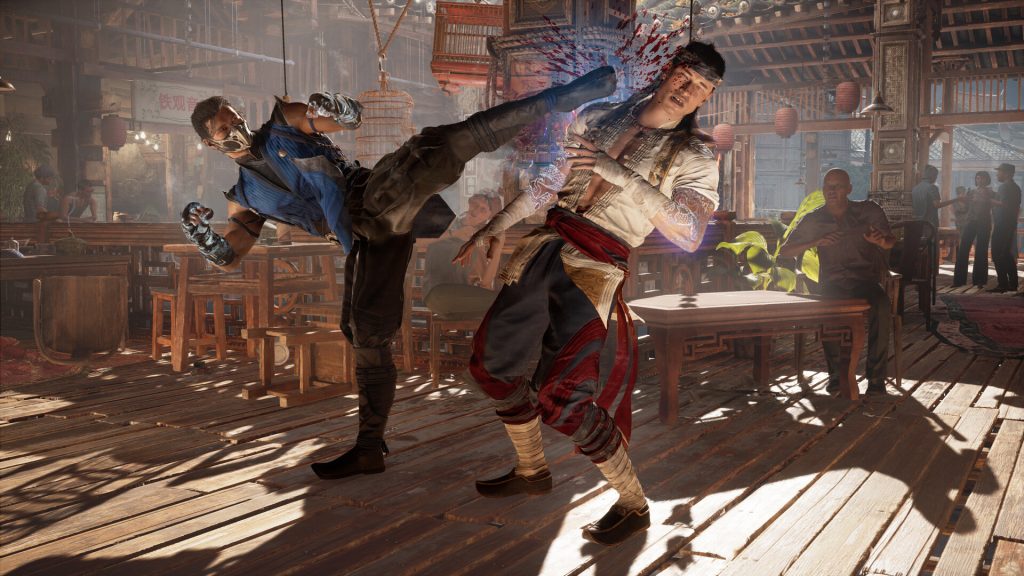
While it may not seem like a lot, these few extra options add a massive amount of tools to a player’s move-set as it is entirely possible to use your Kameo character’s assist attacks to set yourself up for a combo that may otherwise be a risky one, fake out your opponent by aiming high only for your Kameo to freeze them low, or even work as a protected stand-up mechanic by calling an assist as soon as you get up, driving back an eager attacker. They can be used in all manner of ways to extend a combo or even pop-up an enemy to open them up to an air combo. All of these systems can be explained throughout the tutorials and help ease players a bit into the complicated elements of choosing a Kameo that best fits their favorite fighter’s playstyles, though it is quite obvious that there are some balance issues among the Kameos already, with some simply being far more helpful than others in almost any situation.
As mentioned before, players will find a variety of gameplay modes available to them with a number of single player options. This includes the aforementioned Story Mode, Invasion Mode, and Towers that all offer single player content with Story and Towers being predictable enough affairs while Invasions works as Mortal Kombat 1’s long-running single player draw by offering seasonal content on pre-designed “game-board” style maps that will, seemingly, be changed and altered between seasons while also offering new customization options for the entire roster that also refreshes every season, all of it included in the game at no extra cost and offering plenty of credits to buy anything players may want from the unlock shop.
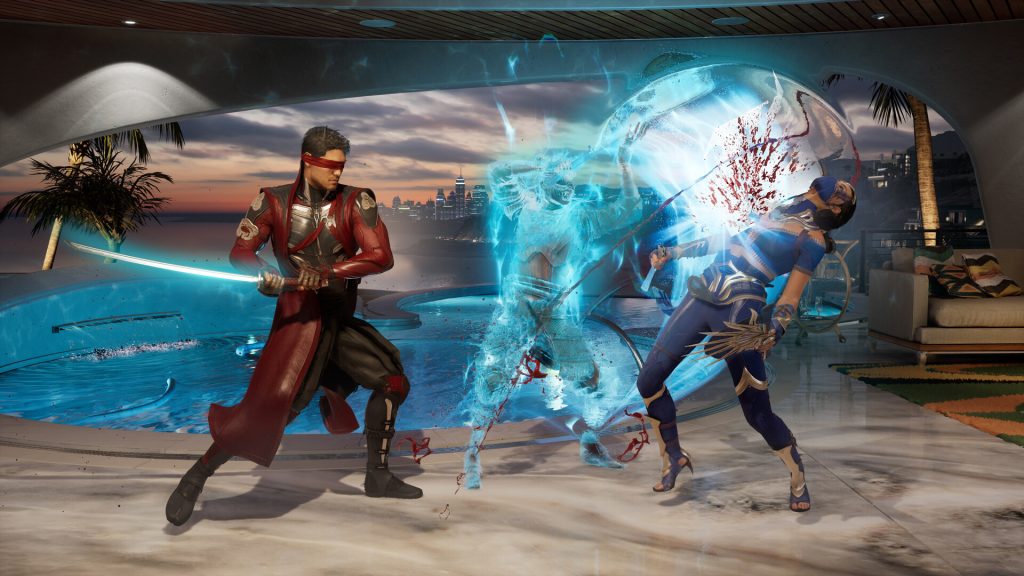
Invasions itself will allow players to use whatever fighter they wish, though there is a strange elemental system in play that will have certain fighters take way more damage or less damage from others depending on their character’s element. Alongside elements it also features an RPG style system where players can level up and apply stat points to their character of their own will, even grinding XP for an advantage or using items to boost their stats, have infinite meter for a match, etc. to try and help them win a particularly difficult fight. The game board that players travel through will be almost entirely made up of fights with “Test Your Might” and “Survive” objectives popping up here and there as well as a Shop and Forge. Players can use “talismans” to trigger special effects in a match such as trigger fireballs, summon sawblades, or even give themselves armor and these talismans can be upgraded in various ways. All in all Invasions has a ton of content and while some of it may be a bit on the easier side of things, some fights being so easy that a perfect is almost guaranteed, it does allow plenty of content for players to sink their teeth into that promises to refresh regularly with single players in mind. It even contains hourly, daily, and weekly towers that really up the ante and test a player’s skill in some rather ridiculous situations.
As mentioned before, player’s can use seasonal currency earned from Invasion to buy specific items for their favorite fighters, with some having more than others at the moment though this promises to change. This includes palette swaps, different equipment like Johnny Cage’s sunglasses being different types or Nitara’s wings, to entirely different costumes for some characters. Players will also unlock extra customization options the more their “fighter mastery” improves by using their favorite characters and Kameos to fight. It is worth noting that there is a paid currency in the game where certain customization items are only available but, between seasonal content, unlockable content through standard use, and even the randomized shrine purchases from gold, there is tons of content to unlock without ever even touching the paid shop.
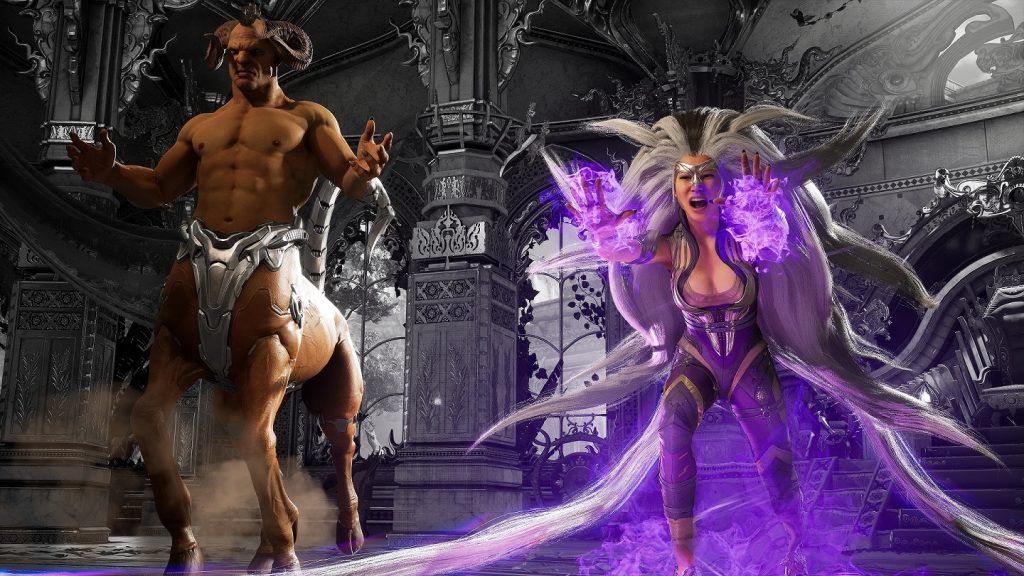
The online multiplayer in Mortal Kombat 1 works incredibly well with the game seeming to offer satisfying netcode that can support multiple friends playing King of the Hill without an issue and players can choose to take part in the ranked Kombat League if they wish to obtain various rewards depending on their rank or simply partake in player matches. Oddly enough, there is no way to wait for a match to be found during another gameplay mode, like Towers, though finding opponents online is an incredibly fast endeavor at the moment.
Audio & Visuals
With Mortal Kombat 1 being able to focus solely on releasing on the current generation of consoles, leaving the others in the past, NetherRealm has been able to truly craft an absolutely beautiful looking game here. Every fighting stage is unique looking with plenty of interesting details to see in the background to the action while the character models themselves are easily the best they have ever looked with plenty of expressions throughout the story mode and even during fight introductions. Customization options are plentiful and the gore is just as intense as usual, from bruises/scratches/slashes showing up on fighters during a battle to the blood-spewing Brutalities and Fatalities that players can trigger at the end of a match, they have never looked better. Even the bone-breaking X-Ray style Fatal Blows are as fancy looking as ever, combining moves of both the selected fighter and the Kameo character into a brutal combo.
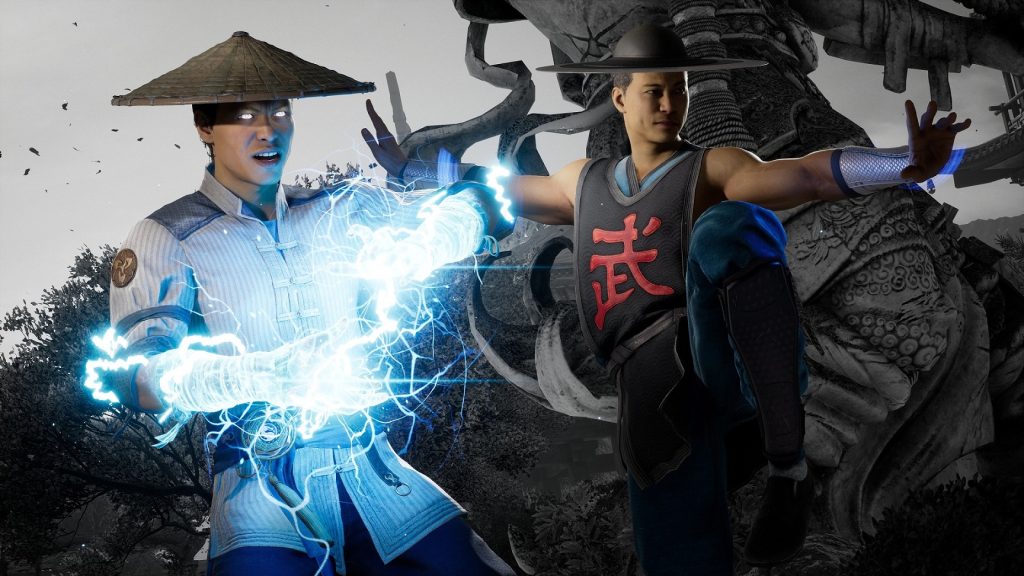
For the most part the voice acting for Mortal Kombat 1 is fitting with all of the characters sounding excellent in their roles here, even if the action can get a bit cheesy at times. I say mostly, as, once again, NetherRealm has included a celebrity to voice one of their fighters with newcomer Nitara being voiced by Megan Fox during her intro, story, and finishing scenes. Megan’s performance is lackluster and often flat feeling, especially when talking directly with other characters, which is odd as it sounds like an entirely different voice actress handled her in-fight voicelines, grunts, and screams. The soundtrack features a solid collection of music that works great during the menu screens and as background music.
Overall
Mortal Kombat 1‘s design as being a soft reboot while continuing the story of the franchise as a whole allows for some great story developments and unique interactions to occur all while giving NetherRealm plenty of excuses to change up and add new mechanics to the game, with Kameos being an amazing addition that adds plenty of depth to an already enjoyable combat system. That being said, the premiere single player mode, Invasions, is a bit on the simple side despite being the only real mode outside of the story mode that doesn’t involve fighting online, though the online netcode is still great, if a bit dated at times with its set-up. These hindrances do little to dampen Mortal Kombat 1’s gorgeously brutal presentation and combat that feels like it has the most to offer in quite some time, allowing this “reboot” to more than live up to fan expectations.
Capsule Computers review guidelines can be found here.


